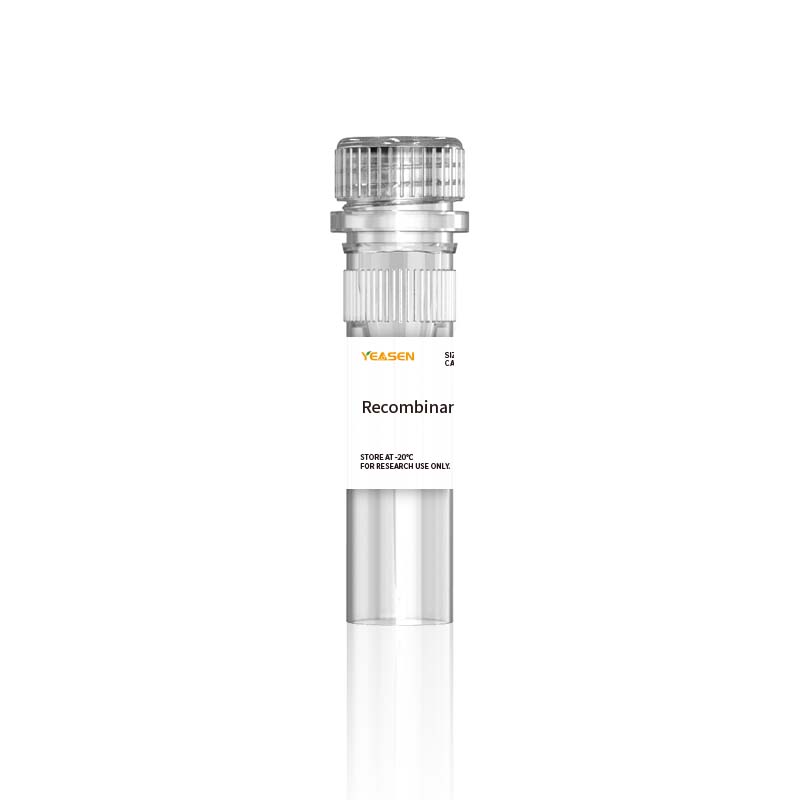Description
CEACAM-5, also known as CEA and CD66e, belongs to the large family of CEACAM and pregnancy specific glycoproteins. CEACAM molecules are either transmembrane or GPI-linked, and are differentially expressed between species. Orthologs of human CEACAM-5 have not been described in other species. CEACAM-5, which is expressed primarily by epithelial cells, consists of an N-terminal Ig-like V-set domain followed by six Ig-like C2-set domains and a GPI anchor. CEACAM-5 is synthesized as a 180 kDa, variably glycosylated molecule of which approximately 60% is carbohydrate. CEACAM-5 functions as a calcium-independent adhesion molecule through homophilic and heterophilic interactions with CEACAM-1. CEACAM-5 is restricted to the apical face of intestinal epithelial cells in the adult but is more diffuse during embryonic development and in tumors. This is consistent with a role in the development and maintenance of epithelial architecture. CEACAM-5 is up-regulated in a wide variety of human tumors and is a commonly used cancer marker. It promotes tumor cell migration, invasion, adhesion, and metastasis. It also contributes to tumor formation by maintaining cellular proliferation in the presence of differentiation stimuli, and by blocking apoptosis following loss of ECM anchorage (anoikis).
Specifications
|
Synonyms |
CEACAM-5; CD66e; CEA; Meconium antigen 100; Carcinoembryonic; CEACD66e; DKFZp781M2392 |
|
Uniprot No. |
|
|
Source |
Recombinant Human CEACAM-5/CD66e Protein is expressed from HEK293 Cells with His tag and Avi tag at the C-terminal. It contains Lys35-Ala685. |
|
Molecular Weight |
The protein has a predicted MW of 74.2 kDa. Due to glycosylation, the protein migrates to 115-150 kDa based on Tris-Bis PAGE result. |
|
Physical Appearance |
Sterile Filtered White lyophilized (freeze-dried) powder. |
|
Purity |
> 95% as determined by SDS-PAGE and HPLC |
|
Activity |
1.ELISA Data:Immobilized Human CEACAM-5 at 0.5μg/ml (100μl/well). Dose response curve for Anti-CEACAM Antibody, hFc Tag with the EC50 of 14.8ng/ml determined by ELISA. 2.SPR Data: Human CEACAM-5, His Tag captured on CM5 Chip via Anti-His Antibody can bind Anti-CEACAM5 Antibody, hFc Tag with an affinity constant of 0.12nM as determined in SPR assay (Biacore T200). |
|
Endotoxin |
< 1.0 EU per 1μg of the protein by the LAL method. |
|
Formulation |
Lyophilized from 0.22 μm filtered solution in PBS (pH 7.4). Normally 5% trehalose is added as protectant before lyophilization. |
|
Reconstitution |
Centrifuge tubes before opening. Reconstituting to a concentration more than 100 μg/mL is recommended (usually we use 1 mg/mL solution for lyophilization). Dissolve the lyophilized protein in distilled water. |
Storage
The product should be stored at -20~-80℃ for 1 year from date of receipt.
2-7 days, 2 ~8 °C under sterile conditions after reconstitution.
3-6 months, -20~-80℃ under sterile conditions after reconstitution.
Recommend to aliquot the protein into smaller quantities when first used and avoid repeated freeze-thaw cycles.
Note
1. Avoid repeated freezing and thawing.
2. Please operate with lab coats and disposable gloves, for your safety.
3. This product is for research use only.
Product Data




HB220624
Payment & Security
Your payment information is processed securely. We do not store credit card details nor have access to your credit card information.
Inquiry
You may also like
FAQ
The product is for research purposes only and is not intended for therapeutic or diagnostic use in humans or animals. Products and content are protected by patents, trademarks, and copyrights owned by Yeasen Biotechnology. Trademark symbols indicate the country of origin, not necessarily registration in all regions.
Certain applications may require additional third-party intellectual property rights.
Yeasen is dedicated to ethical science, believing our research should address critical questions while ensuring safety and ethical standards.

